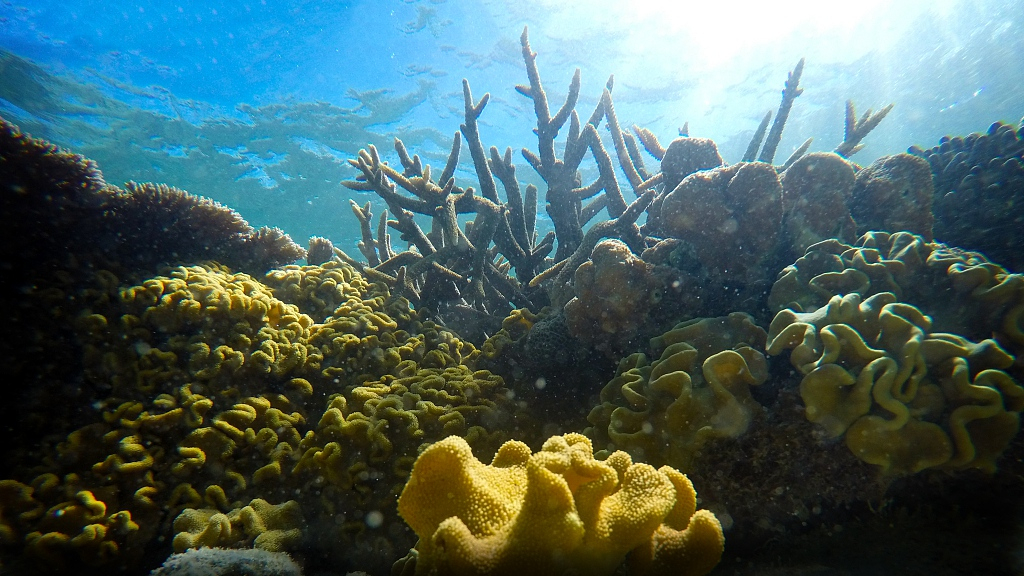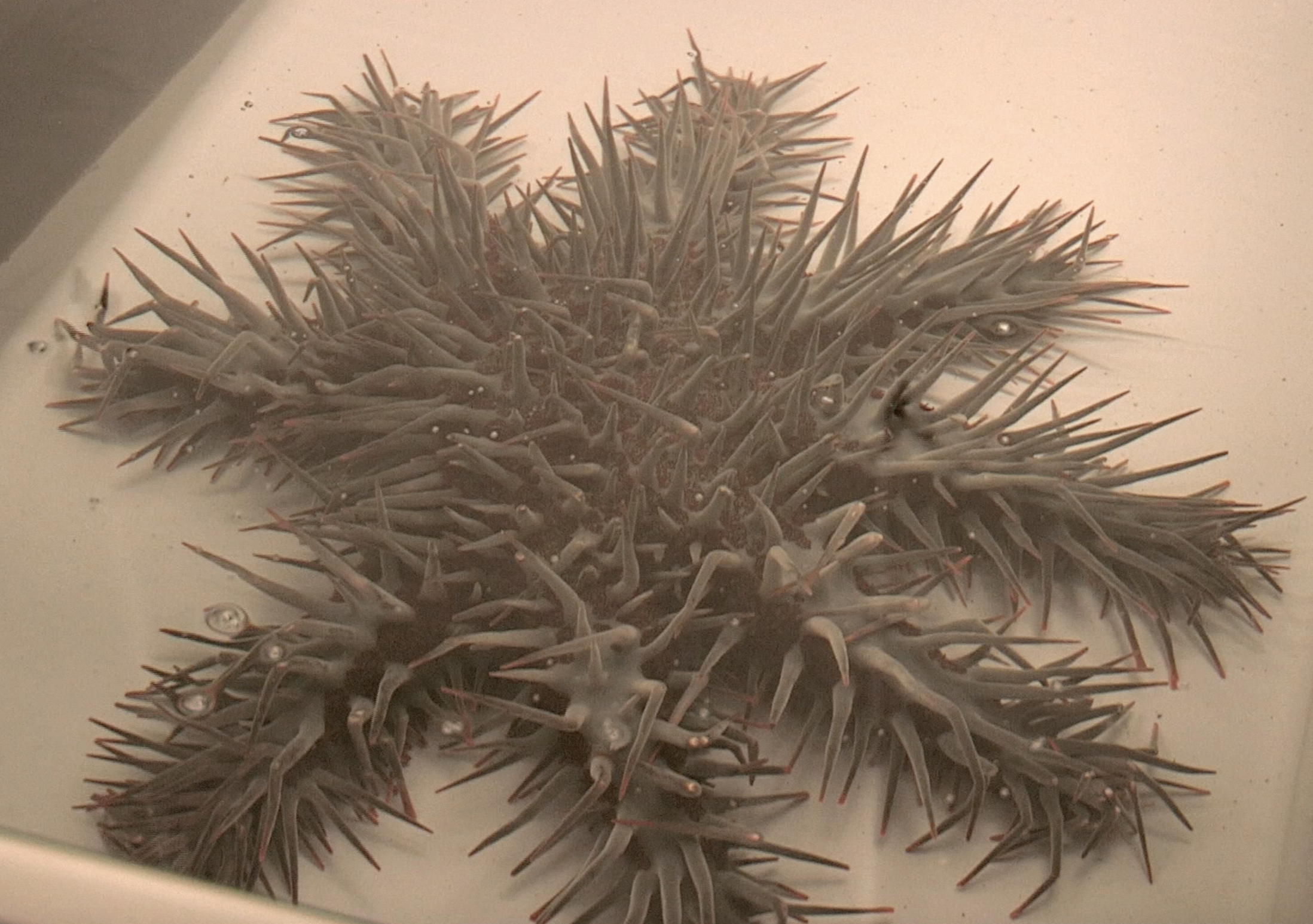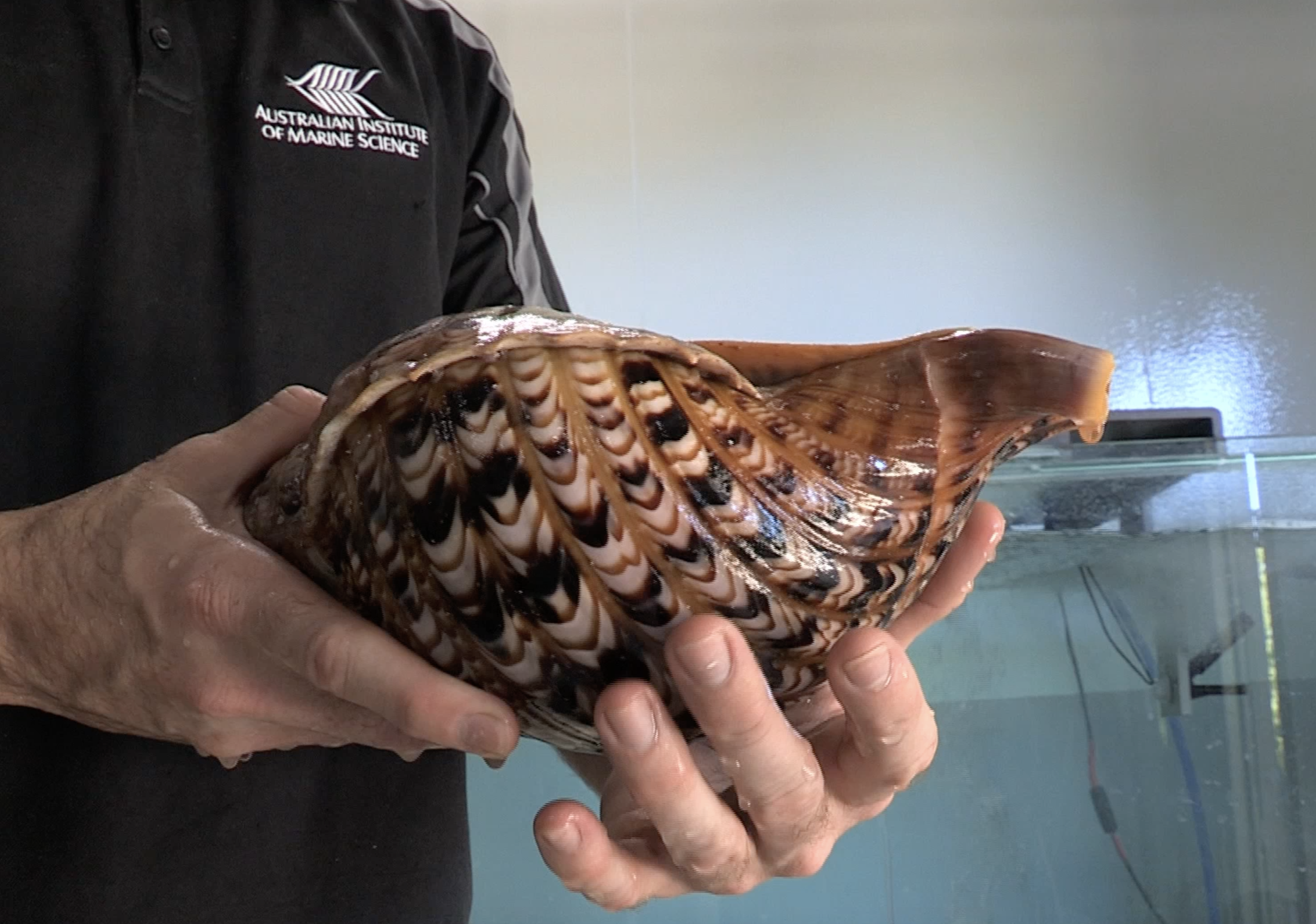

Scientists in Australia believe they may have found a way to deter one of the biggest threats to the Great Barrier Reef. There are hundreds of thousands of Crown of Thorns Starfish on the reef and the predator is known for its voracious appetite.

Crown of Thorns Starfish. /CGTN Photo
"On an individual reef basis they can eat the whole reef basically very quickly within a couple of years," said Australian Institute of Marine Science Principal Research Scientists Sven Uthicke.
"If you have a big outbreak, you have thousands of specimens, thousands of individuals and they can practically eat the whole reef."
The Great Barrier Reef is already struggling to recover from the damage caused by cyclones and coral bleaching events.

The Great Barrier Reef damaged by coral bleaching. /Reauters Photo
"Mostly corals can recover from those particular threats. The Crown of Thorns Starfish on the other hand represent a real threat because once the infestation occurs they will strip off all of the coral tissue and their corals can't recover," said Australian Institute of Marine Science Marine Products Chemist Cherie Motti.
Uthicke and a team of scientists are working on a method of detecting outbreaks before they happen by analyzing the DNA in water samples. Researchers also believe the key to deterring the Crown of Thorns Starfish from eating coral may be the Giant Triton Snail, which feeds on the starfish.

The Giant Triton Snail. /CGTN Photo
"We have done some studies here at the Australian Institute of Marine Science where we have put the water surrounding the Giant Triton Snail into a tank with the Crown of Thorns Starfish and what we see is the starfish literally flips out of the tank. It tries to escape. It will actually turn upside down and run around on the surface of the water so what we know is it is sensing some sort of chemistry from its predator and it knows that it is in danger and it tries to flee, so we are interested in trying to understand what that chemistry is and if we can use that chemistry as some sort of deterrent," said Motti.
(Top image via VCG)
(If you want to contribute and have specific expertise, please contact us at nature@cgtn.com)

Copyright © 2018 CGTN. Beijing ICP prepared NO.16065310-3
Copyright © 2018 CGTN. Beijing ICP prepared NO.16065310-3